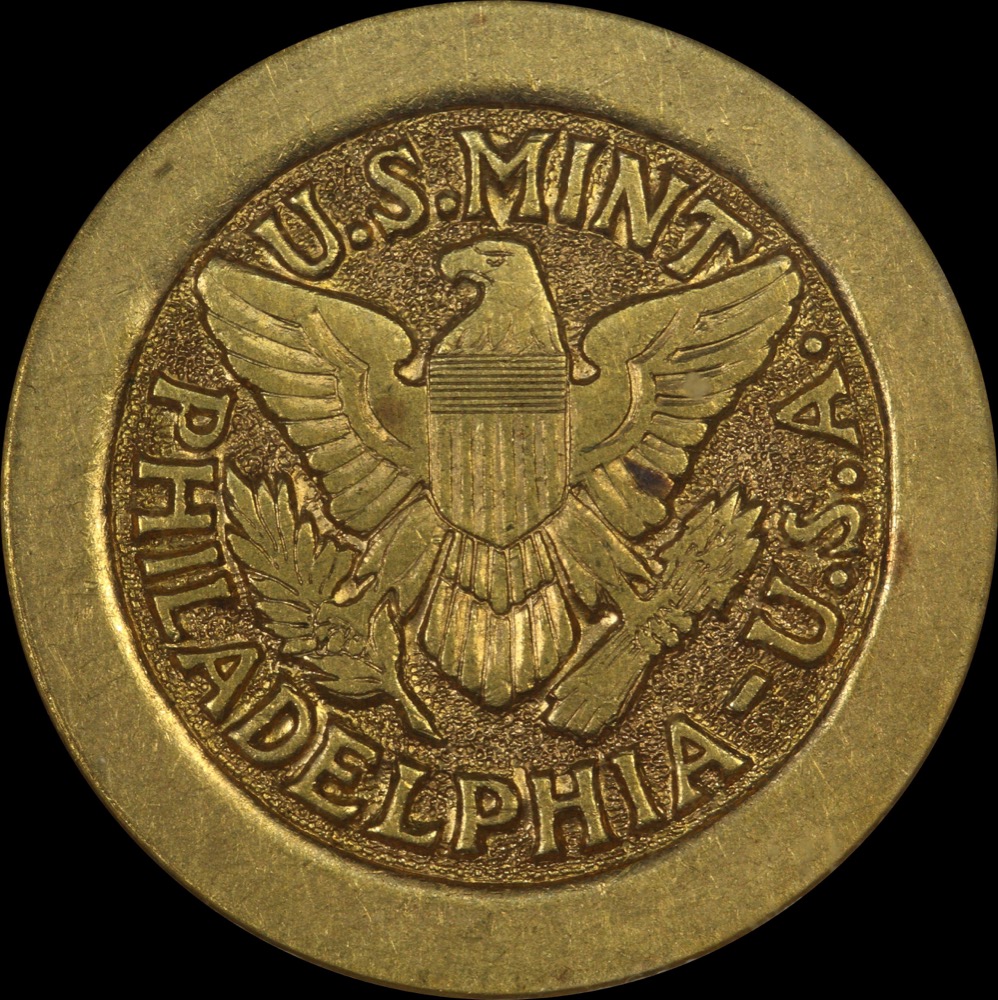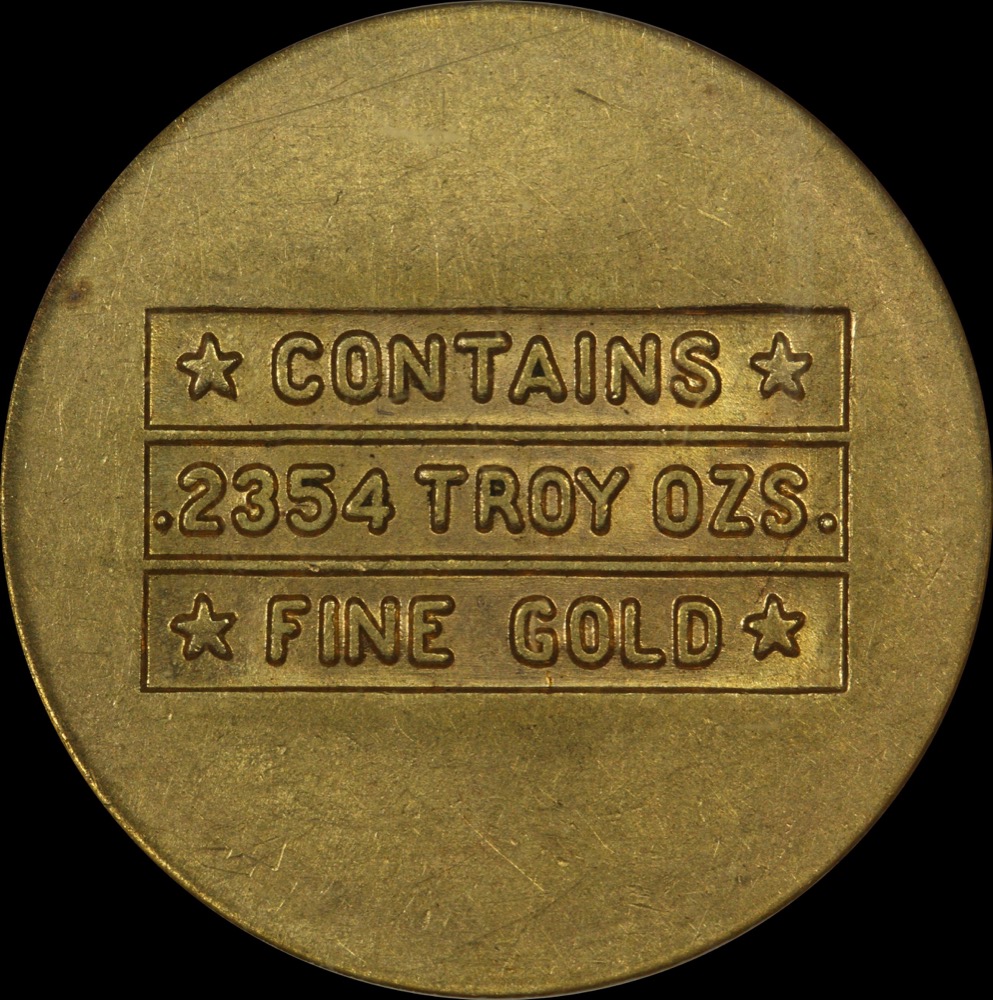The Aramco Gold “Sovereign” of 1947

Saudi Aramco (Arabian American Oil Company) owns, operates and develops all energy resources based in Saudi Arabia, and as a result is believed to be the world’s most valuable company.
The relationship between the United States and the Saudi government is well known as being both lucrative and complex for both sides. It is also well known that this relationship has been tested numerous times over the past 70 years, most significantly when it became known that 15 of the 19 terrorists involved in the September 2011 terrorist attacks on New York were Saudi citizens.
American Gold for Saudi Arabia?
In the context of these recent events, many coin collectors are fascinated and intrigued to learn that the US Mint at Philadelphia struck a number of gold “discs” for the Saudi government in 1947.
That interest is further piqued when they learn they were struck to exactly the same technical standards of weight and purity as the British gold sovereign – the gold trade coin of arguably the United States’ largest commercial rival in the Middle East at that time.
The story of just why the US national mint would strike these “coins” is worthy of any Tom Clancy thriller. The broader story of the US / Saudi relationship during this period has been covered in a non-fiction book titled “Oil, God, and Gold: The Story of Aramco and the Saudi Kings”, by Anthony Cave Brown. The book has been described as covering “…the extraordinary tale of what the U.S. State Department once called the most valuable commercial prize in the history of the planet.” Suffice to say, it makes for an incredible read.

The Official Explanation
The Director of the (US) Mint made an official statement in 1956 that explained the existence of the 1947 Aramco sovereign - they were produced to provide the Saudi Government with gold bullion in a form that was acceptable to them.
The Director of the Mint stated that the US Treasury Department considered the discs to be gold bullion and not coinage. The Director of the Mint explained that any gold bullion cast by the US Mint or any US Assay Offices has two identifying features – the eagle hallmark design of the US Mints and Assay offices, as well as an explicit identification of the gold content.
When we remember that the “discs” were in fact struck (and not cast, as all other gold ingots or bars were at that time), and that they were exactly the same weight and purity of the British sovereign – which, along with the silver Saudi Arabian riyal, was the most important coin circulating in Saudi Arabia at that time, today’s collector could be forgiven for thinking that the Aramco “sovereigns” are for all intents and purposes, coins.
Aramco’s Debts and the Paper US Dollar
An article in the New York Times in 1991 provides a somewhat more detailed and colourful, if not yet empirically verified, explanation:
“The coins were struck in Philadelphia by the United States Mint in 1945 and 1947 to satisfy the obligations of the Arabian American Oil Company, or Aramco, which had been set up in Saudi Arabia by four American oil companies. The company was obliged to pay the Saudi Government $3 million a year in oil royalties and its contract specified that the payment be made in gold. The United States dollar at the time was governed by a gold standard that, at least officially, made the dollar worth one thirty-fifth of an ounce of gold. But the price of gold on the open market had skyrocketed during World War II. For a time the Saudis accepted payment in United States currency, but by 1945 they were insisting that the payments in gold be resumed. Aramco sought help from the United States Government. Faced with the prospect of either a cutoff of substantial amounts of Middle Eastern oil or a huge increase in the price of Saudi crude, the Government minted a number of gold disks adorned with the American eagle and the words "U.S. Mint -- Philadelphia." Aramco paid for the minting and the bullion.”
Anecdotal Reports – If It Looks Like a Duck…
Notwithstanding the official explanation from the Director of the US Mint, anecdotal reports from expats that lived in Saudi Arabia in the years shortly after 1947 indicate that at least some of the “discs” were actually used as currency for several years. The following snippet was taken from the “Aramco Brats” website, one set up to cater to expats that have lived in Saudi Arabia: “There was a time when the SAG issued gold sovereigns. This was when the US price for gold was pegged at $35/oz. American housewives would go shopping carrying little bags of gold.” This quote reminds us that if a thing looks like a duck and sounds like a duck, there is quite a good chance it is a duck.

Nearly All Were Melted in India or Exchanged for Saudi Gold
Once the mintage of the Aramco gold discs was complete in 1947, the Saudi Government placed a further order for with the US Mint at Philadelphia, this time for gold coins featuring Saudi designs, again on the same weight standard of the British sovereign.
There are a number of anecdotal reports online that state many of the 1947 “Aramco” discs were melted so they could be struck into the new Saudi gold coins (or indeed exchanged for them). Between 1949 and 1950, many unopened crates of the Aramco gold discs were dispatched to the bullion markets of Bombay, where the American gold that was purchased at $35 per ounce, was sold for $70 an ounce. Most of the coins were then melted into bars, and later sold in Macao.
A Story That Begs for More Investigation
The story of the 1947 Aramco sovereigns has a number of threads that make it a compelling coin to own:
- They were struck for the world’s most valuable company;
- They were payment for “…the most valuable commercial prize in the history of the planet”;
- They represent a lack of confidence of one of America’s most important trading partners in the US Dollar; and
- They are an emblem of the commercial rivalry between the United States and Great Britain in the Middle East in the middle of the 20th century.
Throw in the heavy involvement of the US military industrial complex in the Middle East, and we have a story that any collector can richly explore for years to come.
